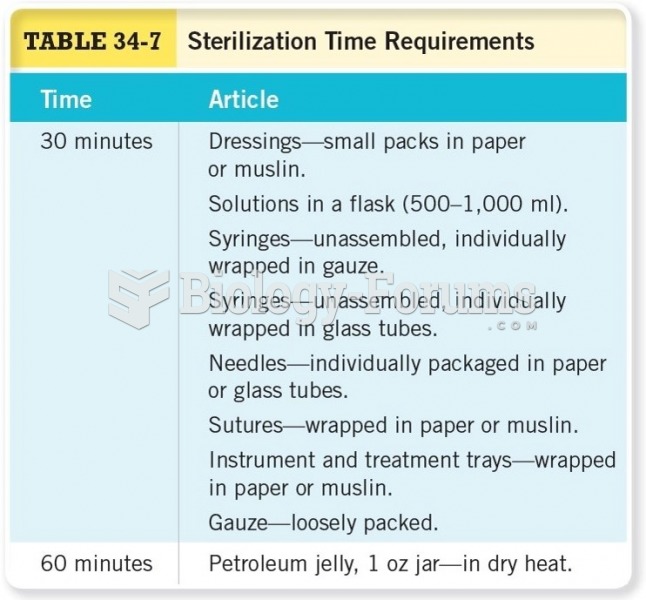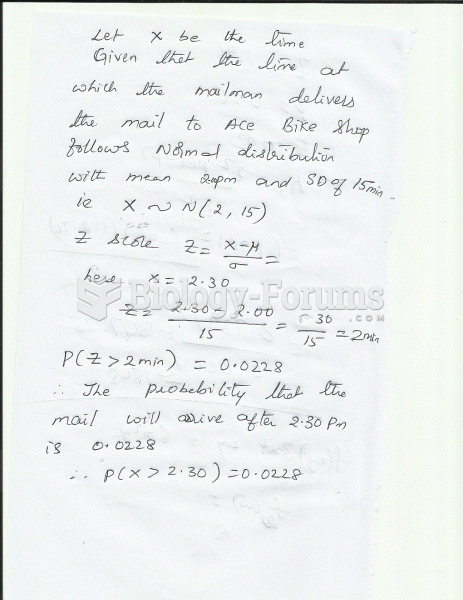|
|
|
There are approximately 3 million unintended pregnancies in the United States each year.
Prostaglandins were first isolated from human semen in Sweden in the 1930s. They were so named because the researcher thought that they came from the prostate gland. In fact, prostaglandins exist and are synthesized in almost every cell of the body.
Medication errors are more common among seriously ill patients than with those with minor conditions.
Astigmatism is the most common vision problem. It may accompany nearsightedness or farsightedness. It is usually caused by an irregularly shaped cornea, but sometimes it is the result of an irregularly shaped lens. Either type can be corrected by eyeglasses, contact lenses, or refractive surgery.
A seasonal flu vaccine is the best way to reduce the chances you will get seasonal influenza and spread it to others.







